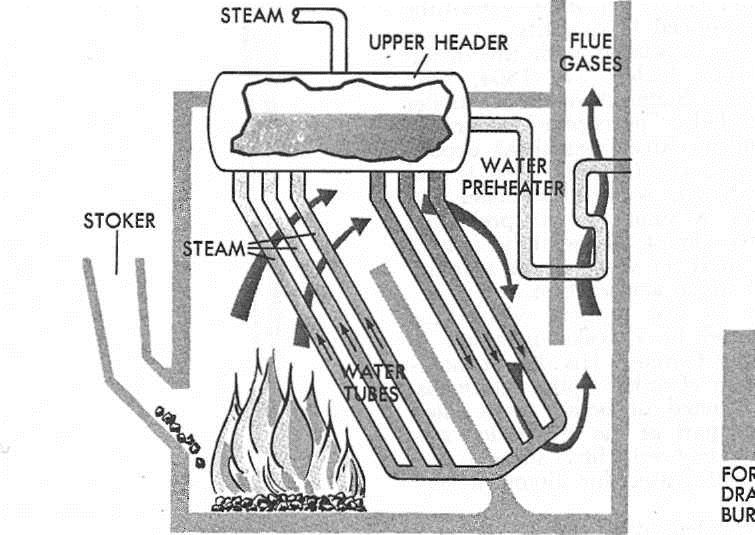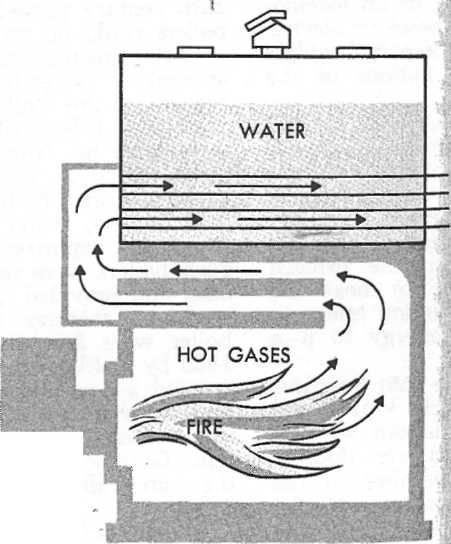
- •Предисловие
- •Unit I hvac systems. Heating Active Vocabulary
- •1. Read the following international words and guess their meaning. Mind the stress.
- •Verbs and verbal phrases
- •4. Match the terms and their definitions.
- •5. Read the text thoroughly and translate it in written form. Text a. Hvac Systems
- •6. Decide which statements are true and which ones are false.
- •7. Complete the following sentences by adding the phrases given in part b.
- •8. Answer the questions on the text.
- •9. Translate the following pairs of derivatives.
- •10. Transform as in the models.
- •11. Choose the right word or word–combination.
- •12. Insert the appropriate words.
- •13. Fill in the words listed below.
- •15. Find key words and phrases which best express the general meaning of each part.
- •16. Make a short summary of the text. Do it according to the following plan.
- •17. Read the following text and answer the questions below. Text b. Heating. Historical Development
- •18. Read the following text and speak on the main energy sources for heating systems. Render the text in Russian. Text c. Energy Sources for Heating Systems.
- •19. Read the text and name the main types of the heating value(s) of a substance. Text d. Heating Value
- •20. Read the text a and make notes under the following headings. Then use your notes and the illustrations to talk on the topics
- •Unit II heating systems
- •1. Read the following international words and guess their meaning. Mind the stress.
- •2. Read and memorize the active vocabulary.
- •Verbs and verbal phrases
- •4. Match the terms and their definitions.
- •5. Read the text thoroughly and translate it in written form. Text a. Central Heating Systems. Principles and Design.
- •6. Decide which statements are true and which ones are false.
- •7. Complete the following sentences by adding the phrases given in part b.
- •8. Answer the questions on the text.
- •9. Translate the following pairs of derivatives.
- •10. Transform as in the models.
- •11. Choose the right word or word–combination.
- •12. Insert the appropriate words.
- •14. Find key words and phrases which best express the general meaning of each part.
- •15. Make a short summary of the text. Do it according to the following plan.
- •16. Read the following text and answer the questions below. Text b. Warm–air Heating Systems. Part I.
- •Hydronic Systems. Part II.
- •18. Read the text and speak on the main types of emitters. Text d. Types of Emitters.
- •19. Read the texts a and b. Make notes under the following headings. Then use your notes and the illustrations to talk on the topics.
- •Unit III air coditioning and ventilating
- •1. Read the following international words and guess their meaning. Mind the stress.
- •Verbs and verbal phrases
- •4. Match the terms and their definitions.
- •5. Read the text thoroughly and translate it in written form. Text a. Air Conditioning
- •6. Decide which statements are true and which ones are false.
- •7. Complete the following sentences by adding the phrases given in part b.
- •8. Answer the questions on the text.
- •9. Memorize the following pairs of derivatives, paying attention to the meaning of the prefixes.
- •10. Transform as in the models.
- •11. Choose the right word or word–combination.
- •12. Insert the appropriate words.
- •13. Fill in the words listed below.
- •15. Find key words and phrases which best express the general meaning of each part.
- •16. Make a short summary of the text. Do it according to the following plan.
- •17. Read the following text and answer the questions below. Text b. Ventilation
- •18. Read the following text and speak on the types of air–сonditioning systems. Render the text in Russian. Text c. Air Conditioning Systems
- •19. Scan the following text and speak on what the main ventilation systems provide. Render this text in Russian. Text d. Whole – house Ventilation System Designs.
- •20. Read the texts a and b. Make notes under the following headings. Then use your notes and the illustrations to talk on the topics.
- •Unit IV hvac equipment
- •1. Read the following international words and guess their meaning. Mind the stress.
- •2. Read and memorize the active vocabulary
- •Verbs and verbal phrases
- •4. Match the terms and their definitions.
- •5. Read the text thoroughly and translate it in written form. Text a. Boiler
- •6. Decide which statements are true and which ones are false.
- •7. Complete the following sentences by adding the phrases given in part b.
- •8. Answer the questions on the text.
- •9. Translate the following pairs of derivatives.
- •10. Transform as in the models.
- •11. Choose the right word or word–combination.
- •12. Insert the appropriate words.
- •13. Fill in the words listed below.
- •15. Find key words and phrases which best express the general meaning of each part.
- •16. Make a short summary of the text. Do it according to the following plan.
- •17. Read the following text and answer the questions below. Text b. Split Air Conditioning
- •18. Read the following text and speak on heat pump and where it is used. Render the text in Russian. Text c. Heat Pump
- •19. Skim over the following text and name the main types of radiators. Text d. Radiators
- •20. Read the texts a and b and make notes under the following headings. Then use your notes and the illustrations to talk on the topics
- •Unit I hvac systems. Heating
- •Heating
- •Heat as a Form of Energy
- •Heat Transfer
- •Alternative Heating
- •Passive Solar Heating
- •Unit II heating systems
- •Heating Systems
- •Warm–Air Systems
- •Steam Heating Systems
- •Electric Floor Heating Systems
- •Selection of a Home Heating System.
- •Unit III air coditioning and ventilating
- •Cooling Systems
- •Ventilation
- •Air Conditioning
- •Future Needs for Air Conditioning.
- •Exhaust ventilation systems
- •Heat–Recovery Ventilator
- •Unit IV hvac equipment
- •Types of Boilers
- •Heat Pump
- •Geothermal Heat Pump
- •Types of Water Heaters
- •Types of Electric Heaters.
- •Refrigeration Air Conditioning Equipment
- •Portable Air Conditioners
- •Oil and Gas Burners
- •Dehumidifier
- •Topical vocabulary unit I hvac Systems. Heating
- •Unit іі Heating Systems
- •Unit ііі Air Conditioning and Ventilating
- •Unit іv hvac Equipment
5. Read the text thoroughly and translate it in written form. Text a. Boiler
Boiler is a pressure vessel in which water is converted to steam by the application of heat. A modern boiler generally consists of a circuit of metal tubes supplied with water. The tubes are placed and arranged to present a maximum surface to a heat source, usually a combustion chamber where fuel is burned. The boiler tubes, combustion chamber, and associated fuel, air, water, and exhaust systems are designed and controlled as an integrated complex, which may be called a boiler, a steam plant, or a steam generator.
Fig.
1.Water–tubeboiler
 equired
to produce steam for industrial use as a process–energy source.
Many space–heating systems utilize steam as a heat–circulation
medium, but some systems, such as those serving several widespread
buildings, are designed to use hot water as a medium. Such systems
are equipped with special boilers that heat water to high
temperatures but maintain sufficient pressure to keep it from
vaporizing.
equired
to produce steam for industrial use as a process–energy source.
Many space–heating systems utilize steam as a heat–circulation
medium, but some systems, such as those serving several widespread
buildings, are designed to use hot water as a medium. Such systems
are equipped with special boilers that heat water to high
temperatures but maintain sufficient pressure to keep it from
vaporizing.
The energy for most boilers is provided by the combustion of the fossil fuels–coal, oil, and gas. Coal is the major fuel, but most boilers are readily convertible from one fuel to another. Other fuels such as wood, waste gases from industrial processes, and solid wastes such as bagasse (from sugarcane), sawdust, and even trash and garbage serve as energy sources to a limited extent. An increasing number of large steam plants built since 1960 for generating electricity are designed to use nuclear fuel, which provides heat from radioactivity.
The most important part of any boiler is the heat–transfer surface, the area where water absorbs enough energy to become steam. Most modern boilers are water–tube boilers (Fig. 1). In this type of boiler the water is passed through metal tubes, which are heated either by convection and conduction from the hot combustion gases that surround them or by direct radiation from the fire. In early designs, and in some small modern plants, the combustion gases are passed through tubes that are immersed in the water.
Such
boilers, called fire–tube
boilers
(Fig. 2), consist of a cylindrical shell with flat ends in which the
water is contained and through which the tubes pass. Fire–tube
boilers are limited to relatively
low operating p ressures
because of the difficulty of constructing a shell strong enough to
with stand the high pressure required for efficient operation. As the
pressure demands of steam engines and turbines increased, the
fire–tube, boiler was supplanted by the water–tube boiler
in
major installations. Small fire–tube units are still manufactured,
chiefly for domestic and small industrial heating systems.
ressures
because of the difficulty of constructing a shell strong enough to
with stand the high pressure required for efficient operation. As the
pressure demands of steam engines and turbines increased, the
fire–tube, boiler was supplanted by the water–tube boiler
in
major installations. Small fire–tube units are still manufactured,
chiefly for domestic and small industrial heating systems.
Fig.
2.
Fire–tube
boiler
The efficiency of modern boilers is extremely high, approaching 90% for large boilers with heat conservation devices. In small–capacity boilers, where the heat–absorption surface is often inadequate, efficiency is lower. In modern domestic boilers fired by gas or oil, efficiencies are about 75%.
Notes:
bagasse – выжимки, жом, жмых
Comprehension
Check
